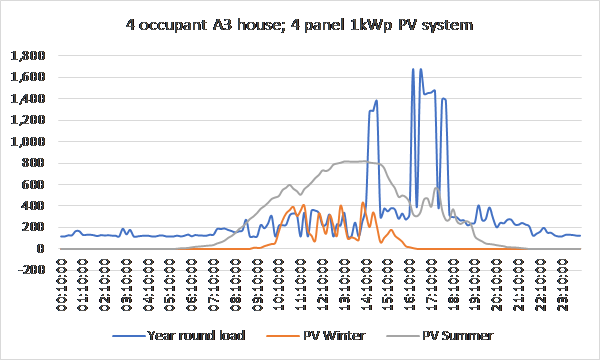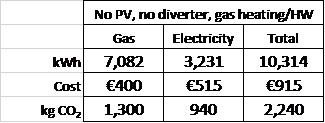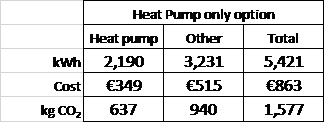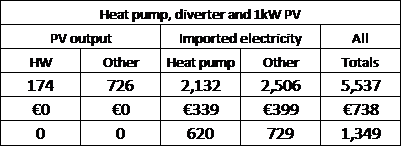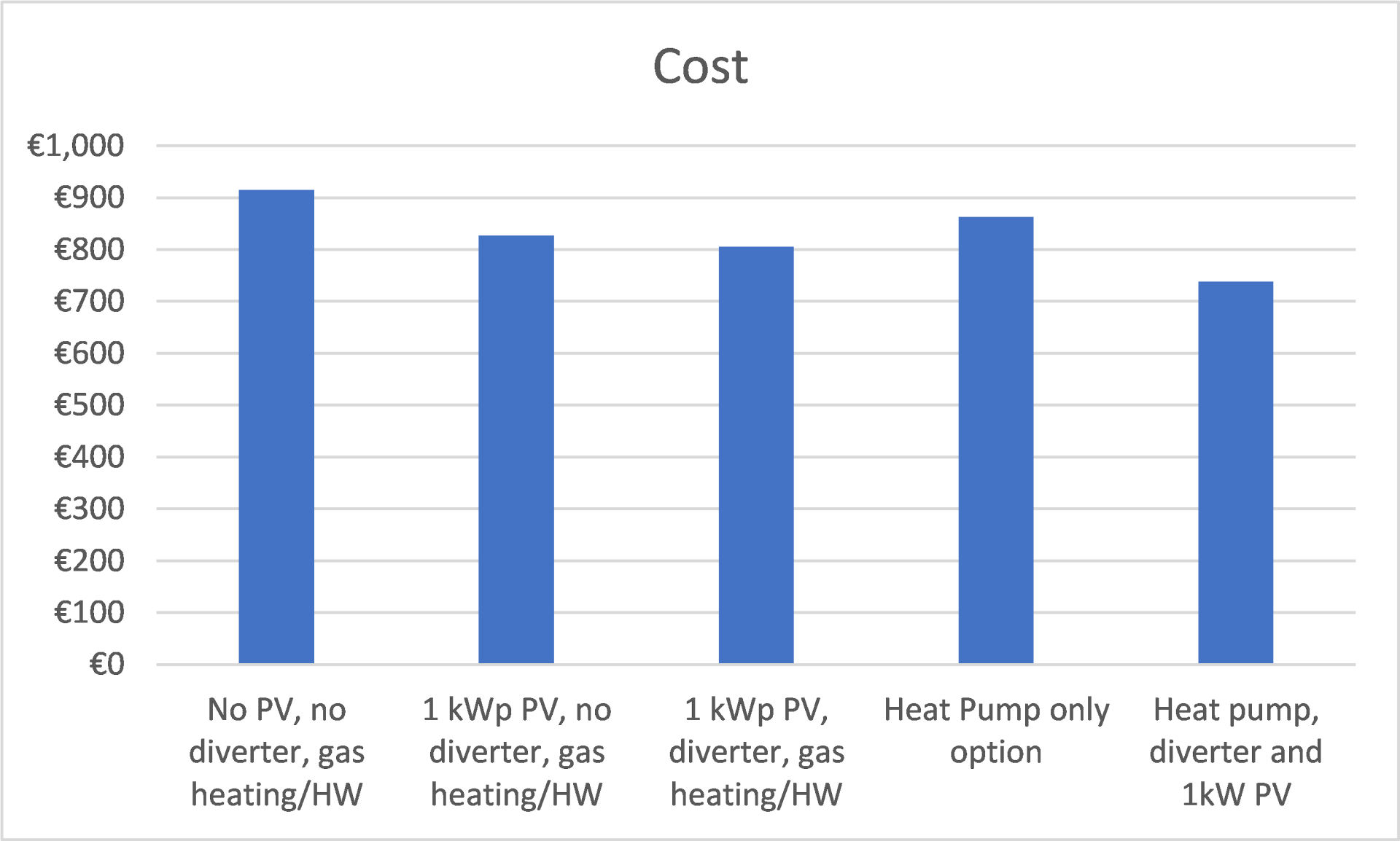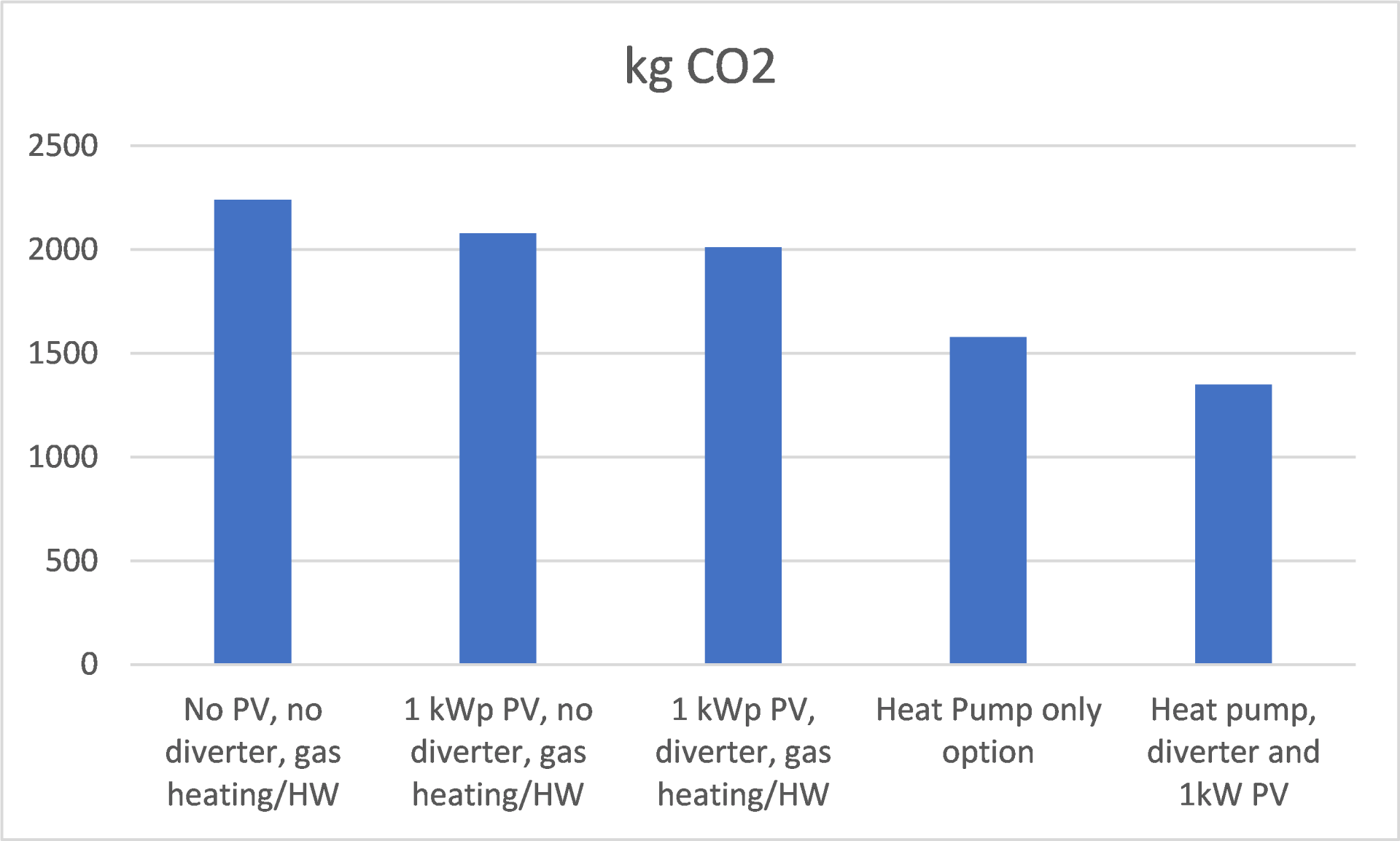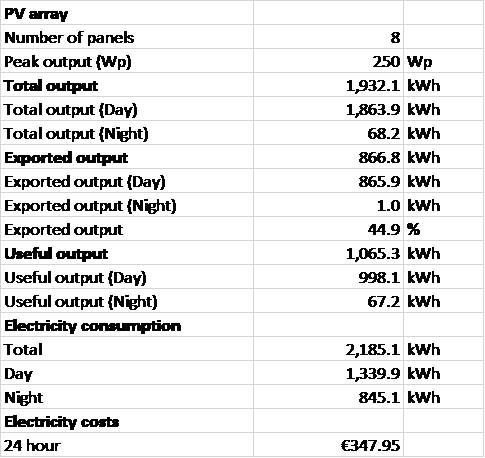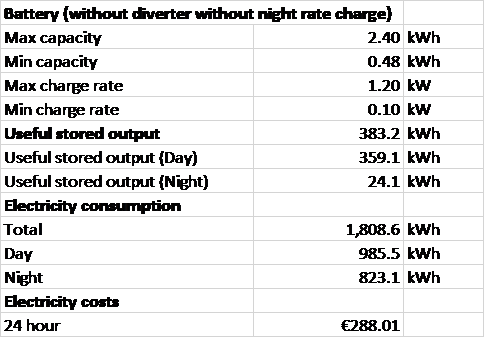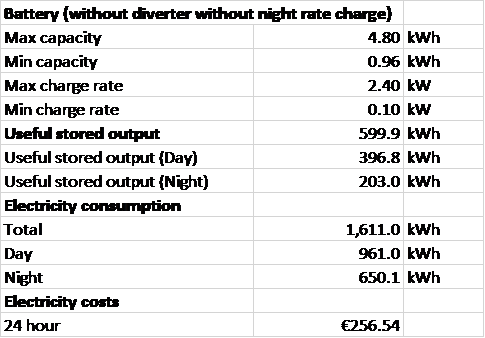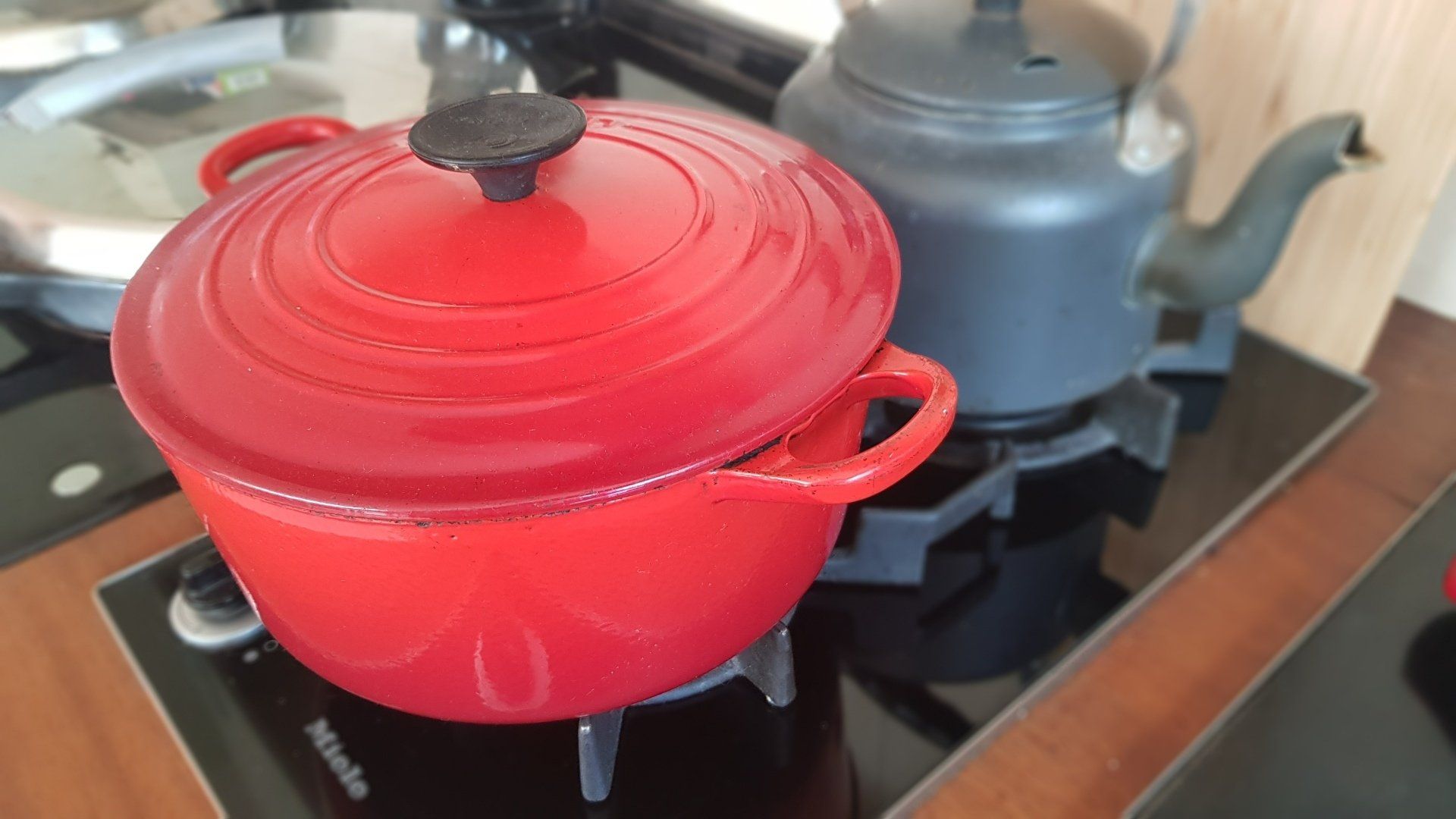Cherrytree Lodge
6 April 2020
Cherrytree Lodge is a 184 m2, A3 rated house, which was completed in February 2015. It is fitted with a whole house heat recovery ventilation unit. Heating and hot water is produced with a condensing gas boiler and a 4 panel 1 kWp PV system with string inverter. There is slight winter shading (that is increasing because of distant tree growth). The house is occupied by two adults and two children.
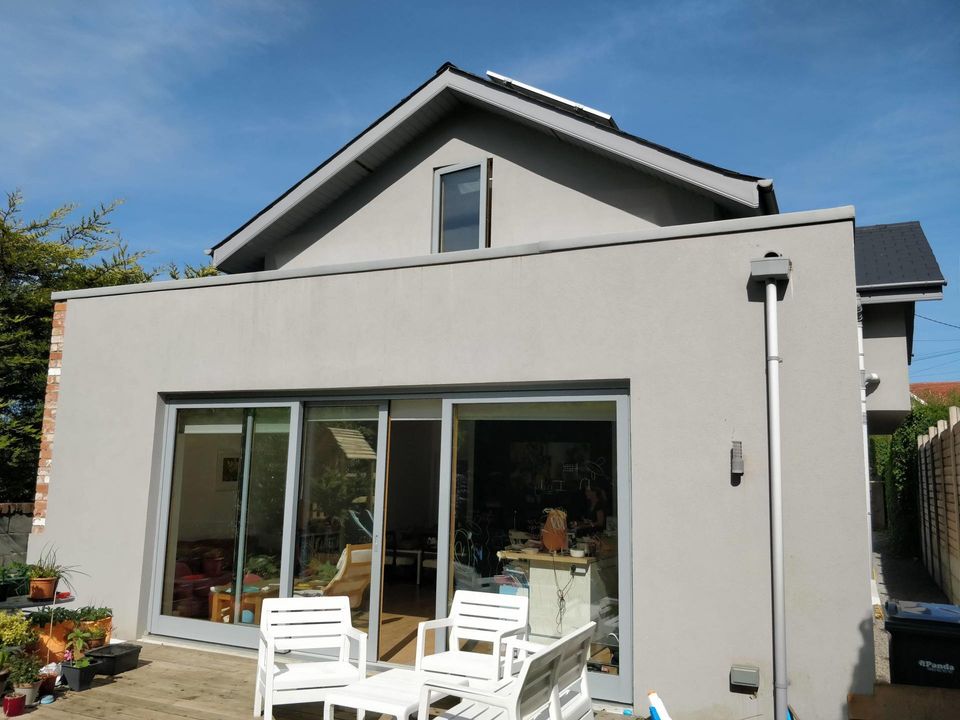
Our original brief was to comply with building regulations in the most economical way possible. The conclusion was that the condensing gas boiler, whole house heat recovery ventilation plus a 1kWp solar PV array was the lowest initial cost solution. A DEAP assessment showed that this met all the required target - annual energy consumption, annual CO2 emission and percentage renewable energy. Annual energy costs weren't a major consideration and, in any event, were very difficult to determine because of the mismatch between solar PV output and household demand – see figure 1.
Because of this mismatch, a considerable amount of the electricity generated by the solar PV system would be exported every year if nothing was done to prevent this. With this in mind, a diverter was installed in October 2018. This diverts all the surplus PV output to the immersion heater in the hot water tank, thereby reducing consumption of gas which would otherwise be used to heat the hot water. The data recorded since then shows that 39.8% of the PV output would have been exported without the diverter.We have now reviewed the performance of the system after five years operation. The results of this review are summarised below;
Our specially developed domestic solar PV system performance simulator enables us to accurately simulate the performance of these systems with a range of solar PV, HW storage tanks and battery storage systems. The following assumptions have been made above;
1. Average gas boiler efficiency = 92.75%
2. Average CoP of heat pump = 3
3. Assumed % PV export with heat pump = 25%
We can use our simulator to look at the effect of increasing the size of the PV array by comparing the figures for different sized systems - please see below.
So, what about a 4.8 kWh battery?
Note: any inconsistencies in cost calculations is due to tariff fluctuations
And can we use the surplus to heat hot water?
The maximum daily surplus with a 1 kW PV system is 2.72 kWh. The daily energy demand for hot water is 5.9 kW, so yes, this works.
The maximum daily surplus with a 2 kW PV system is 8.92 kWh. This is more than the daily demand, so this won't work.
Alternatively we could try to improve the match between load and output by looking at the timing of the washing machines during the summer etc.

Carrigbeg is a detached house in Dun Laoghaire built in 2009 with eight 160Wp Solarfun Monocrystalline PV modules on a south facing roof with a slope of c.35°. The DC output from the PV modules is converted into AC electricity by a Fronius IG15 inverter. The AC supply from the inverter is connected to the main household AC circuit. A MyEnergi Eddi controller diverts surplus PV output to a 3kW immersion heater in the HW tank. The house, which is occupied by two adults, is heated by a condensing gas boiler. Monthly energy consumption in Carrigbeg has been recorded since the Eddi controller was installed in February 2019. The resulting data set is summarised below;

